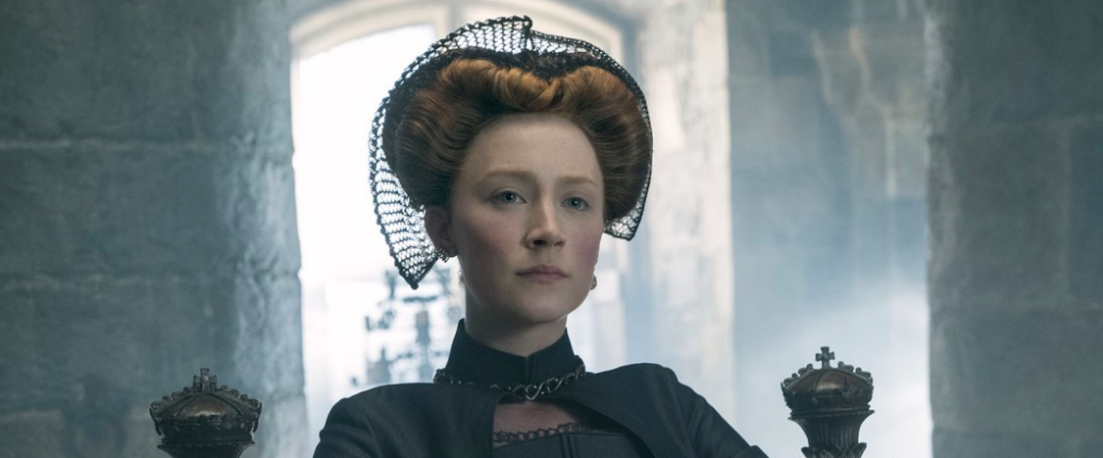With the countless centuries of global history, we have a yearning to learn all of the details of every major occurrence that has taken place. While cinema isn’t the best way for us to be given insight into factual events because of the possibility of inaccuracies, movies can nevertheless do well in providing us with a glimpse into world-changing affairs.
Forty-seven years after Charles Jarrott brought “Mary, Queen of Scots” to screens, director Josie Rourke tackles this fascinating chapter in European history in her remake of the same name, a drama with an abundance of political intrigue and two regal performances from its two leads.
The story follows Mary Stuart (Saoirse Ronan) and her cousin, Queen Elizabeth I (Margot Robbie), during the Rising of the North, a failed endeavor by Catholic nobles from Northern England to take the English throne for Mary, which could have been claimed by her, unless Elizabeth produced an heir.
Ronan delivers a passionate, authoritative performance. She shows the love and respect that Mary has for her subjects, while also digging deep into Mary’s unwillingness to back down when several of her own people turn against her. As she portrays someone who was so young when she became a queen, Ronan brings across Mary’s bravery and ability to make painful decisions, allowing us to see the burden that comes with being royalty.
Although Robbie’s screen time is somewhat limited, she’s still given the opportunity to give a performance that’s as commanding as Ronan. Robbie has an intensity within her character as she shows Elizabeth trying to hold onto her power, but she also evokes the vulnerability of Elizabeth as she continues to fear that power being taken away from her. It’s a gripping performance that makes a lot out of a few scenes, such is the stateliness of Robbie’s portrayal of her character.
Ronan and Robbie share just one scene, which occurs within the last 10 minutes of the film, but it’s one of the most impactful. In this sequence, we witness the reverence that both queens have for each other, while also seeing a clash between Mary’s want of her and Elizabeth to be allies, and Elizabeth’s refusal. Despite this being a rather short scene, it’s an emotional segment of the movie that provides quite a bit of depth into how these two characters view each other.
The screenplay comes from John Guy’s 2005 biography, “Queen of Scots: The True Life of Mary Stuart,” and is written by Beau Willimon. It’s appropriate that the screenplay comes from him, as he’s had success when dealing with political stories over the years, like he did as the creator of the Netflix series “House of Cards,” and as a co-writer for the 2011 film “The Ides of March.” Although the screenplay gets a little repetitive at times in regard to some of the issues that Mary and Elizabeth encounter, the narrative still provides an intriguing, detailed look at the conflict between the two queens, as well as the disputes between each of them and their subjects, where they have to keep proving themselves to those who have different ideas as to how they should rule.
While most of the story is focused on the in-depth look at the struggles that Mary must face in order to maintain Scotland and keep her throne, the scenes that focus on Elizabeth are just as memorable. In these sequences, the narrative provides enough insight into Elizabeth’s endeavors, and this helps flesh out her character, despite having much less screen time than Mary.
The film treats audiences to many breathtaking shots of the English and Scottish lands. The cinematography by John Mathieson frames these landscapes in a way that presents them as being as majestic as the queens who preside over them. Given how the geography is framed, there are many times where we feel like we can see miles away into the distance, and the expansiveness of these views emphasizes the immense responsibility that Mary and Elizabeth have in governing entire countries.
Rourke does well in immersing the audience within the film’s time period, gifting the eyes with vivid artistry when it comes to the set design, costumes, and make-up. There’s a grandness that Rourke brings to the movie, but she doesn’t let the film’s accomplishments in these aspects overpower the story. We’re able to get caught up in the beauty of the filmmaking, while still being enthralled in the intricacies of this piece of history.
Rourke captivates us right from the beginning. The film opens with Mary walking through Fotheringhay Castle to be executed, while Elizabeth walks throughout her own castle. Here, both characters have the camera to their backs as they walk, and through Mathieson’s cinematography, Max Richter’s score, and Chris Dickens’ editing, we have chill-inducing transitions between Mary and Elizabeth that help prepare us for a significant historical story that’s about to be told.
Between its performances, direction, and technical accomplishments, “Mary, Queen of Scots” is a thrilling story of two monarchs who go against what’s believed possible of them.
Grade: A-


You must be logged in to post a comment Login